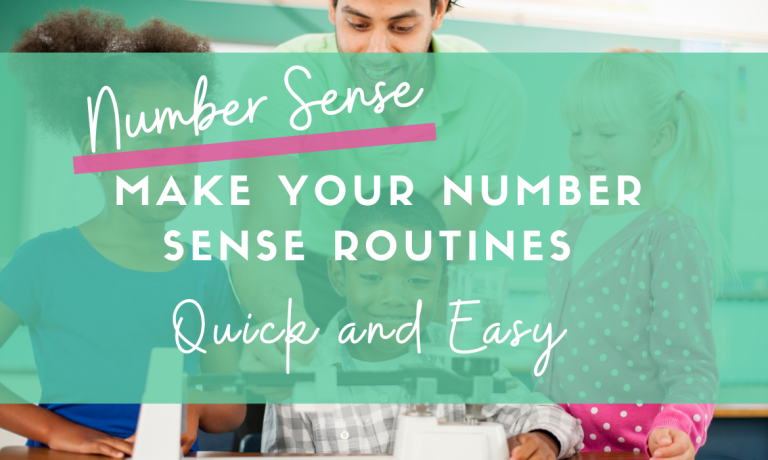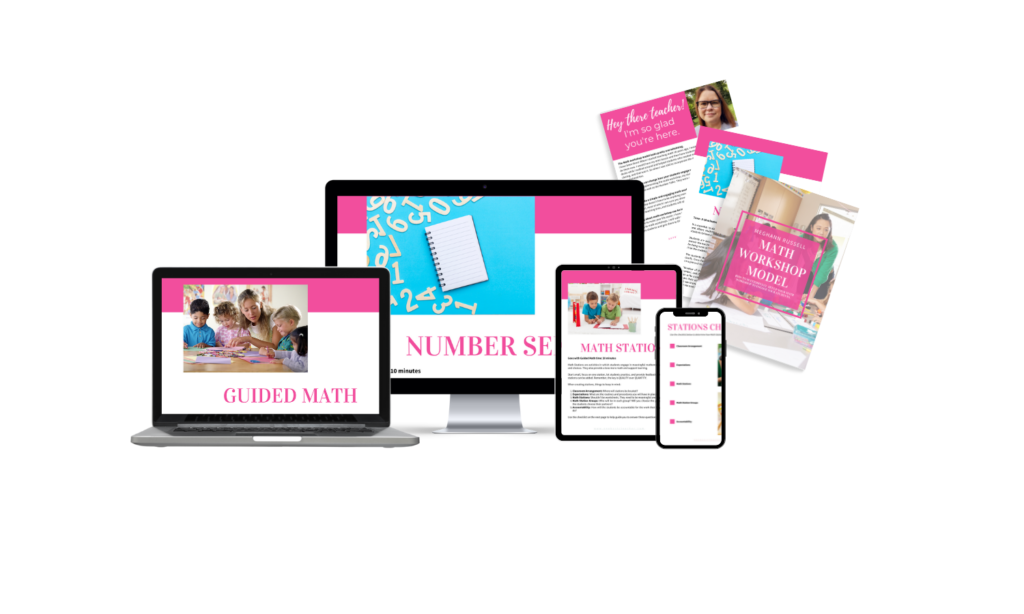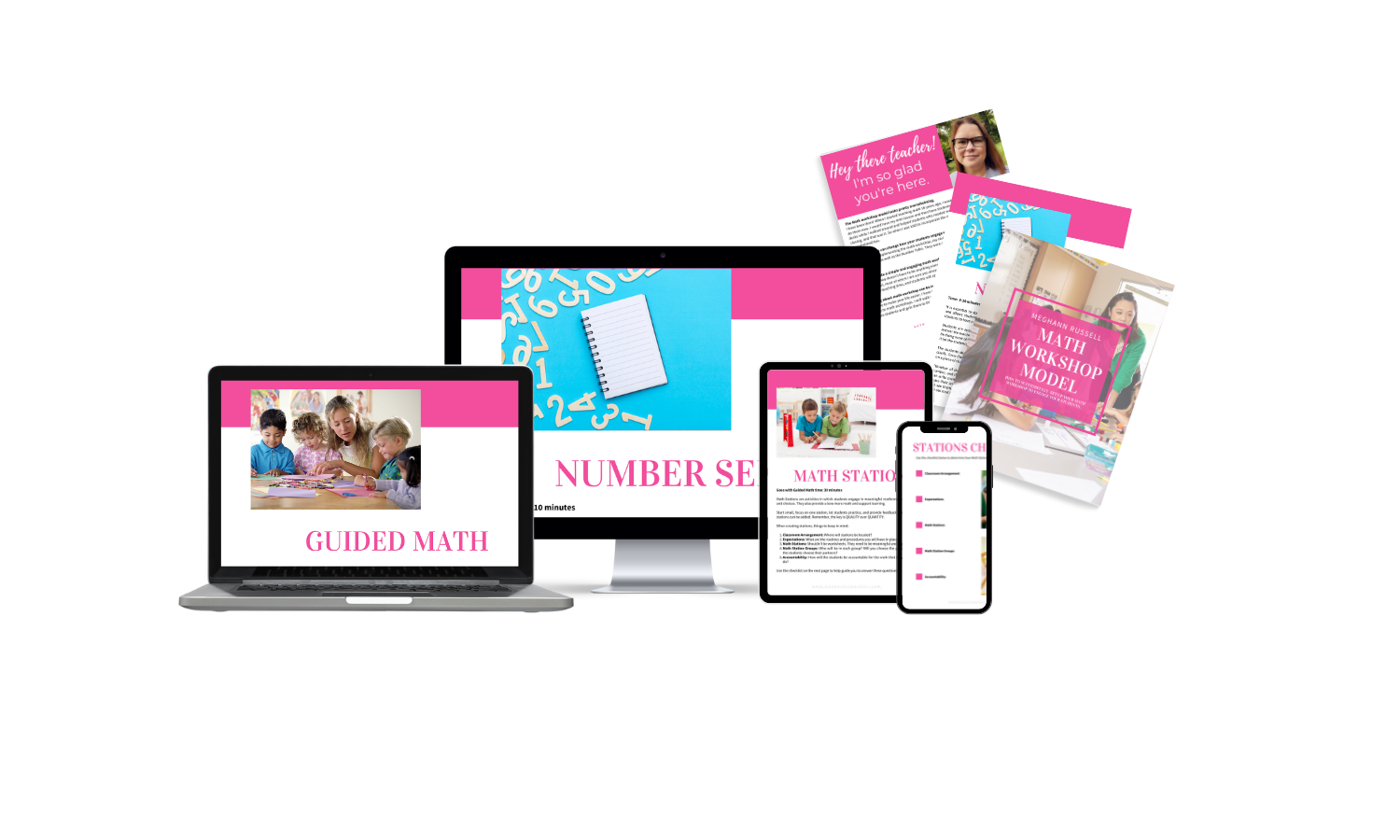My favorite part of the math workshop is the Number Sense routines. I start them every day in my classroom. I love listening to my students think about the problem presented to them and make it into a math problem. This is where I will get them to raise their hand because they want to share what they discovered.
So, in today’s post, I will share with you what number sense routines are and how you can use them in your classroom in just 5 minutes a day.
Now, before I get into the nitty-gritty of establishing a Math Workshop community, if you are looking for a guide to set up your own Math Workshop, I have a guide for you sent directly to your inbox! Just a teacher helping out another teacher! Click here to make your math workshop more engaging and fun!
What is Number Sense?
When I first heard this term, I had been teaching for many years, and I wasn’t sure what it was or if it would work in my classroom. Then a team in my building took the leap, immersed themselves in Number Talks, and loved it, and I knew that it was something I wanted to try. So I grabbed the Number Talks book by Sherry Parrish and started reading it. (You can get the book here)
Number Talks or Number Sense is a daily, short, structured way for students to talk to each other about solving math problems. These lessons take about 10 minutes, an excellent way for students to build on their number sense using mental math and thinking flexibly. By flexibly, I mean understanding that there are many ways to solve a problem. Students are encouraged to think of several ways to answer a given problem.
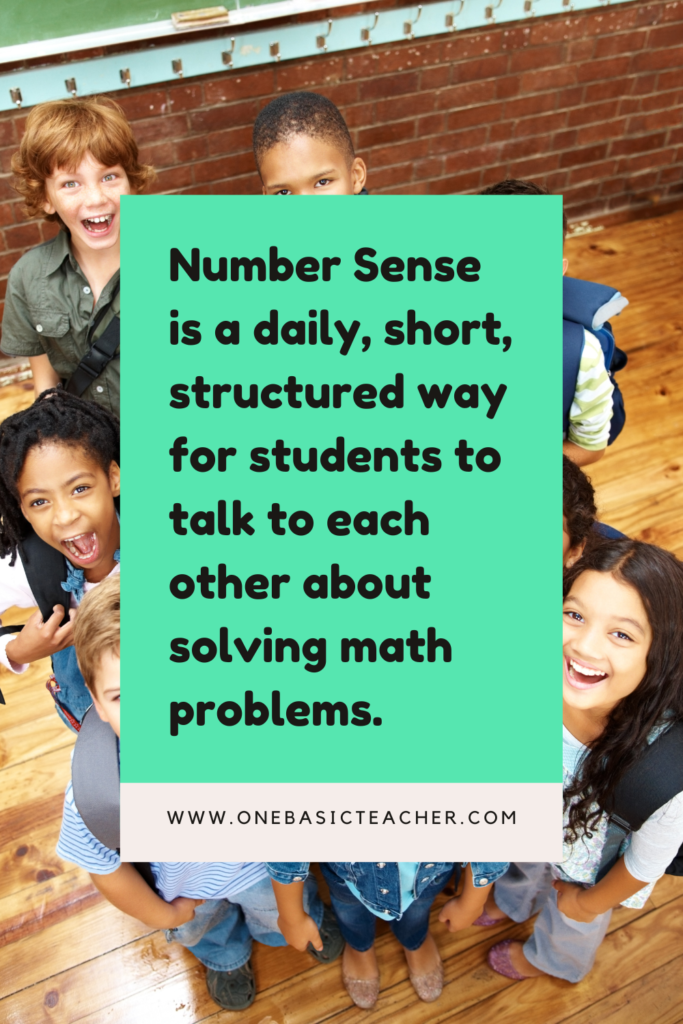
Once they have thought of their answers, they share their thoughts with the rest of the class. Number Sense is also structured to get students talking about how they solved problems. It relies heavily on students talking to each other and using peer teaching frequently in our classrooms!
Number Sense Routines for Math
Notice and Wonder with Number Sense
This is one of my favorite activities to do with my students. It is super easy and only needs you to find an image that students can look at mathematically.
During a notice and wonder activity, you present students with a picture and ask them what they notice and what they wonder. This line of thinking encourages students to use mathematics as a lens to see their world. When students begin to encounter their world with notice and wondering lens, they have opportunities to broaden their understanding of what mathematics is and how it can be incorporated into everything they do and see.
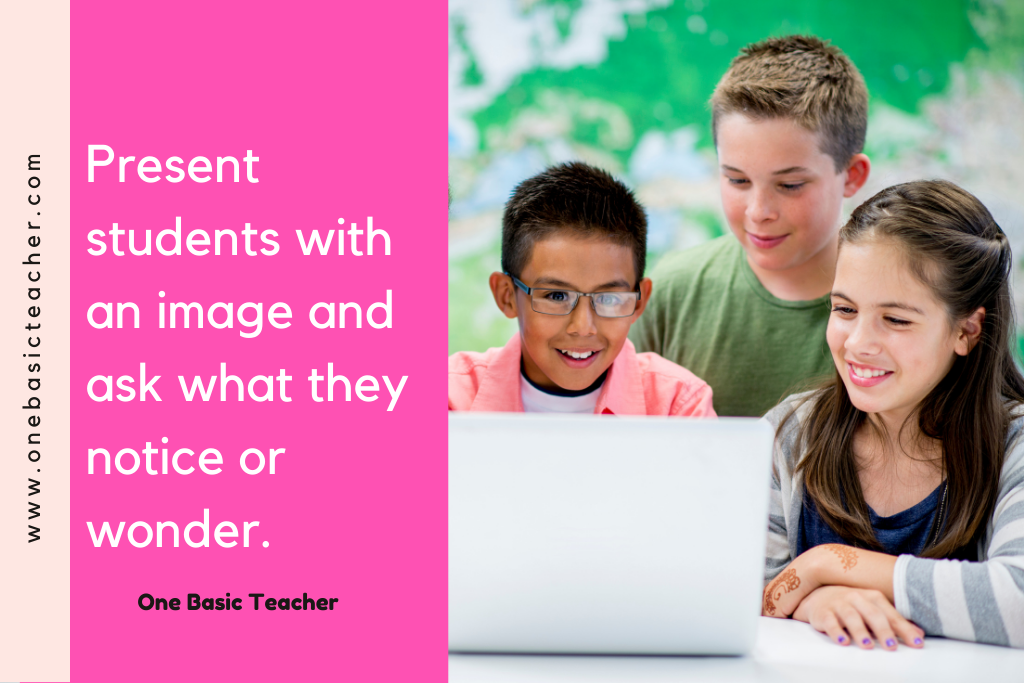
Notice and Wonder allow all students to engage in problem-solving, supporting students in generating ideas and making connections among mathematical concepts.
Students can share their thoughts verbally or write down their reviews on paper and share their responses with the group. Notice and Wonder can be a short routine used to activate student thinking at the beginning of a lesson, such as Number Talks, or a stand-alone routine to encourage math reasoning.
Check out my blog post here if you want to read more about it.
Same and Different with Number Sense
Same and different is similar to Notice and Wonder. Students will look at several pictures (usually anywhere from 2-4 images), raise their hands, and discuss what they think is the same and what is different about the photos. For example, students can compare five kittens with the five dots on a die.
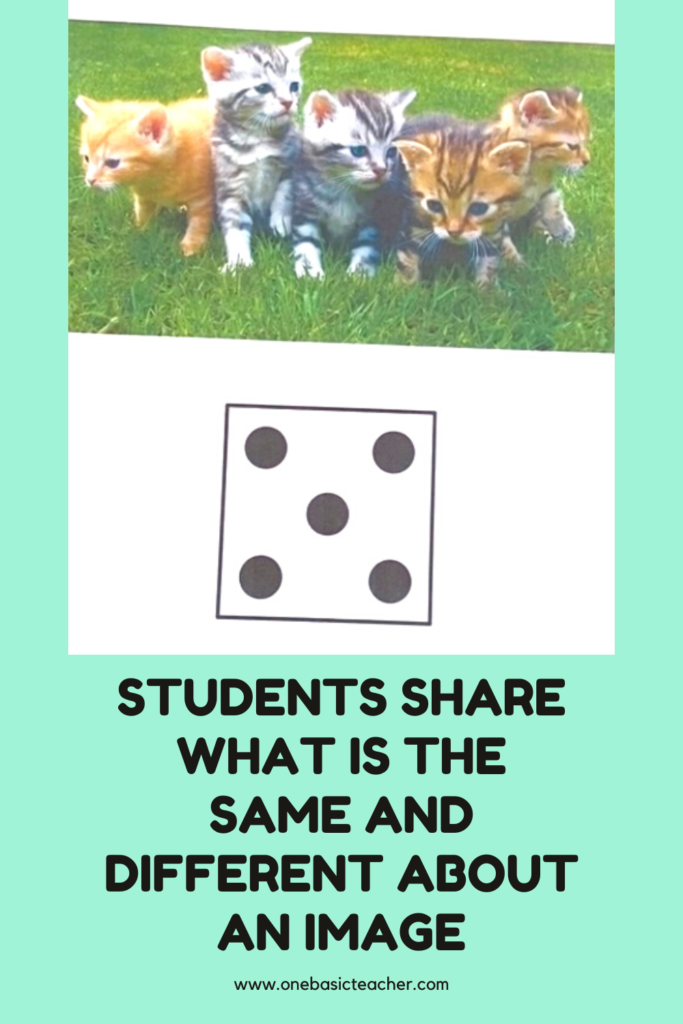
Students might share that they are the same because the picture has five kittens and the die has five dots. They might say they are different because one has animals and the other doesn’t. This activity aims to get students to think critically about the images they see and the commonalities and differences between the pictures.
True or False? With Number Sense
Another fun activity to try is True or False. This is where you make a statement about a math skill. Students must be able to tell you if it is true or false and defend the answer.
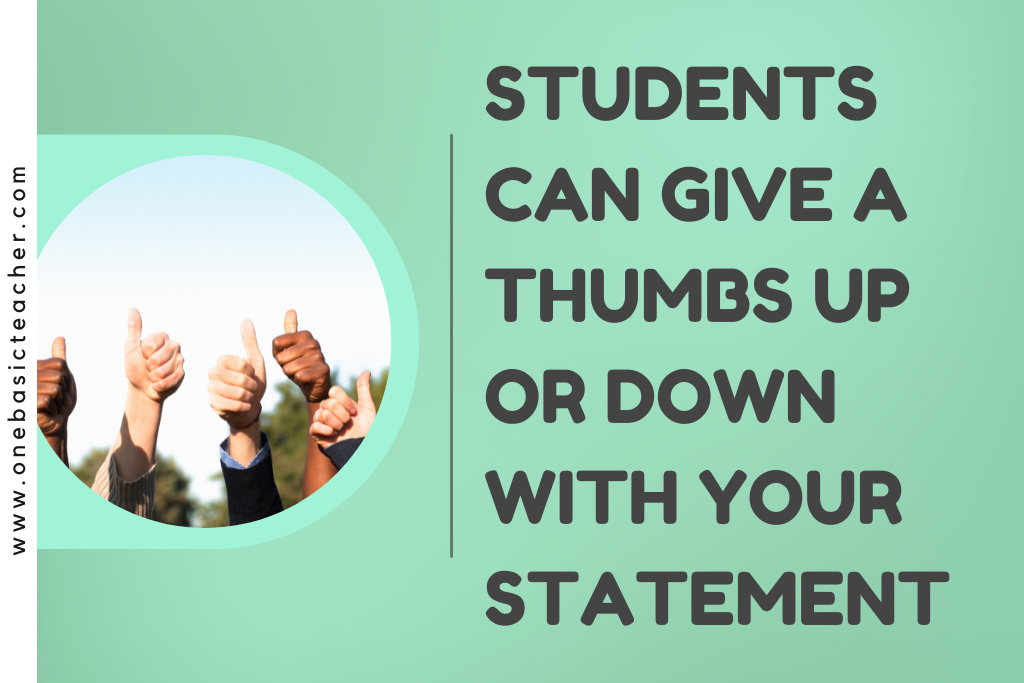
Say you are teaching a measurement unit and want to talk about the length of 2 objects. The first way is to have two physical objects in your hands and give the students a statement such as “The pencil is longer than the crayon.” The students will either give you a thumbs up or a thumbs down. Then they need to explain why they agree or disagree with your statement. Make sure you record their answers on the board, chart paper, or whatever you have available, so students can visualize what is being said by their peers.
If you don’t have space or resources for physical objects in your room, you can also use pictures or clip art and present it similarly by making a statement and asking the students if it is true or false.
Number Sense Routines for Math Workshop
Number sense routines should only take 5-10 minutes of your math block. It is a way to get your students thinking about math and seeing that math is all around them. By looking at an image, students can make noticings or wonderings, think about what is the same and different, and analyze what statements are true and false.
Number Sense is about critical thinking and finding ways to see math in our everyday lives. Number sense routines make it easier for students to relate to math and know that it isn’t just a worksheet or a random problem to solve. Math is in everything that we do.

Related Articles:
Establish a Math Workshop Community in 3 Easy Steps
How to Set up Your Math Workshop Like a Pro

